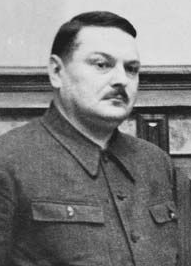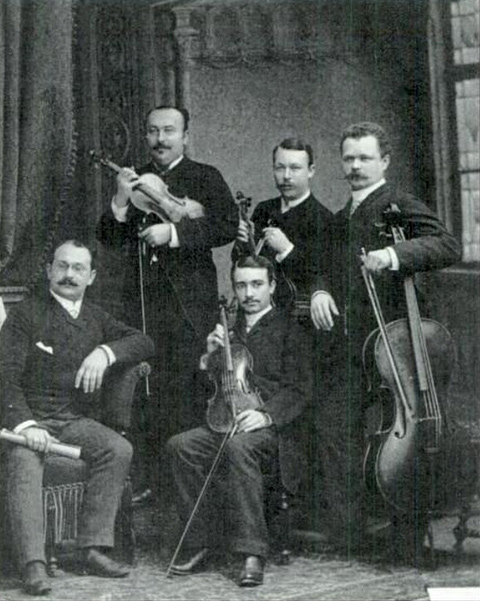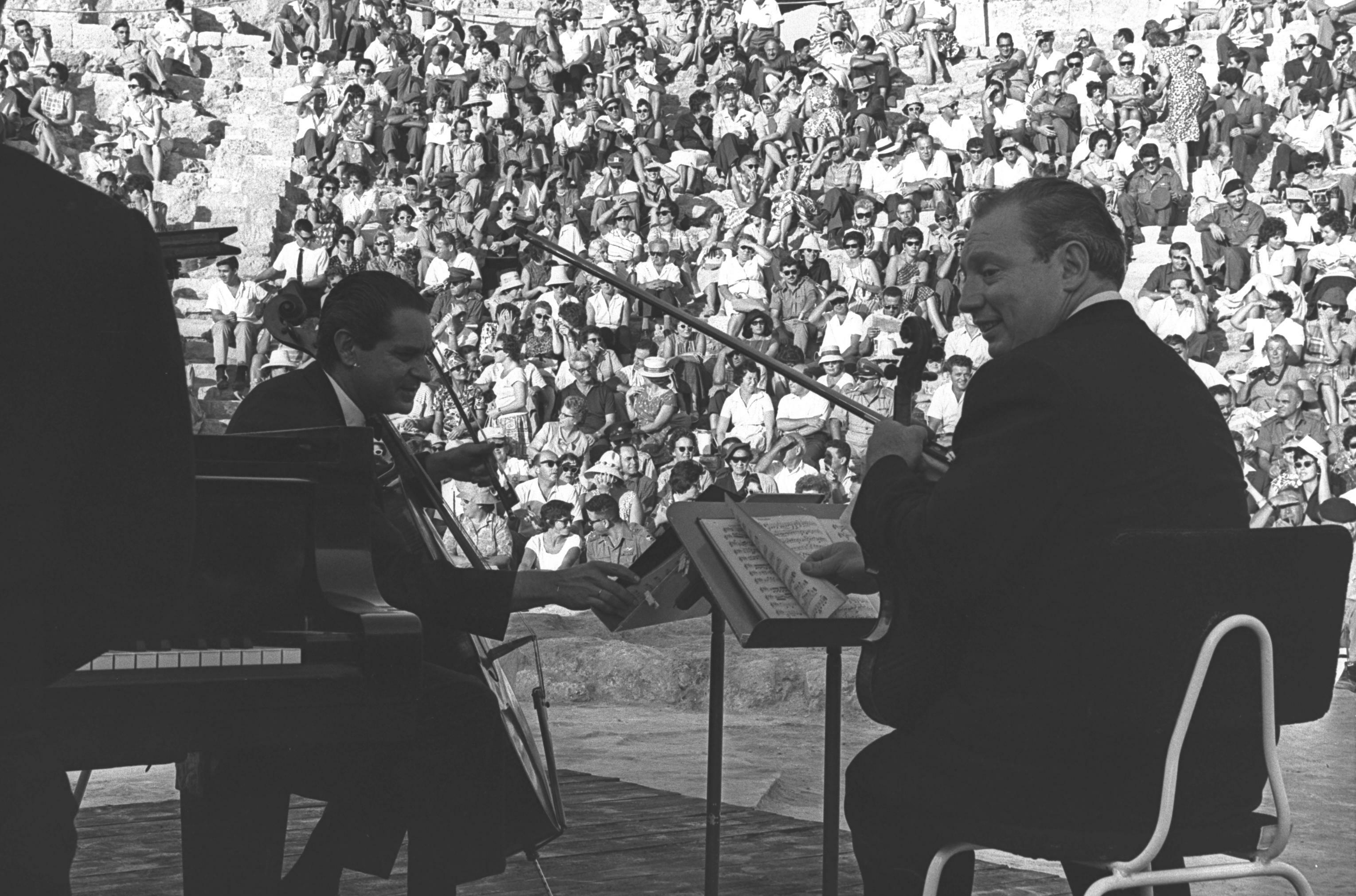|
Shostakovich
Dmitri Dmitriyevich Shostakovich, , group=n (9 August 1975) was a Soviet-era Russian composer and pianist who became internationally known after the premiere of his First Symphony in 1926 and was regarded throughout his life as a major composer. Shostakovich achieved early fame in the Soviet Union, but had a complex relationship with its government. His 1934 opera '' Lady Macbeth of Mtsensk'' was initially a success, but eventually was condemned by the Soviet government, putting his career at risk. In 1948 his work was denounced under the Zhdanov Doctrine, with professional consequences lasting several years. Even after his censure was rescinded in 1956, performances of his music were occasionally subject to state interventions, as with his Thirteenth Symphony (1962). Shostakovich was a member of the Supreme Soviet of the RSFSR (1947) and the Supreme Soviet of the Soviet Union (from 1962 until his death), as well as chairman of the RSFSR Union of Composers (1960–1968 ... [...More Info...] [...Related Items...] OR: [Wikipedia] [Google] [Baidu] |
24 Preludes And Fugues (Shostakovich)
The 24 Preludes and Fugues, Op. 87 by Dmitri Shostakovich are a set of 24 musical pieces for solo piano, one in each of the major and minor keys of the chromatic scale. The cycle was composed in 1950 and 1951 while Shostakovich was in Moscow, and premiered by pianist Tatiana Nikolayeva in Leningrad in December 1952; it was published the same year. A complete performance takes approximately 2 hours and 32 minutes. It is one of several examples of music written in all major and/or minor keys. Form and structure Each piece is in two parts— a prelude and a fugue—varying in pace, length and complexity (for example, Fugue No. 13 in F major is in five voices, while Fugue No. 9 in E major is in only two voices). The pieces proceed in relative major/minor pairs around the circle of fifths: first C major and A minor (prelude and fugue nos. 1 and 2), then to one sharp (G major, E minor), two sharps (D major, B minor), and so on, ending with D minor (1 flat). Chopin's 24 Preludes, Op ... [...More Info...] [...Related Items...] OR: [Wikipedia] [Google] [Baidu] |
Muddle Instead Of Music
Muddle Instead of Music: On the Opera ''Lady Macbeth of the Mtsensk District'' (Russian: Сумбур вместо музыки – Об опере «Леди Макбет Мценского уезда») is an editorial that appeared in the Soviet newspaper ''Pravda'' on January 28, 1936. The unsigned article condemned Dmitri Shostakovich's popular opera '' Lady Macbeth of the Mtsensk District'' as, among other labels, " formalist", "bourgeois", "coarse" and "vulgar". Immediately after publication rumors began to circulate that Stalin had written the opinion. While this is unlikely, it is almost certain that Stalin was aware of and agreed with the article. "Muddle Instead of Music" was a turning point in Shostakovich's career. The article has since become a well-known example of Soviet censorship of the arts. Background Premiere of the opera and initial praise Leningrad composer Dmitri Shostakovich completed his opera ''Lady Macbeth of the Mtsensk District'' in 1932. Set in pre-rev ... [...More Info...] [...Related Items...] OR: [Wikipedia] [Google] [Baidu] |
Lady Macbeth Of Mtsensk (opera)
''Lady Macbeth of Mtsensk'' (russian: Леди Макбет Мценского уезда, translit=Ledi Makbet Mtsenskogo uyezda, link=no, translation=Lady Macbeth of the Mtsensk District) is an opera in four acts and nine scenes by Dmitri Shostakovich, his Opus 29. The libretto, jointly written by Alexander Preys and the composer, is based on the novella ''Lady Macbeth of the Mtsensk District'' by Nikolai Leskov. Dedicated by Shostakovich to his first wife, physicist Nina Varzar, the roughly 160-minute opera was first performed on 22 January 1934 at the Leningrad Maly Operny, and two days later in Moscow. It incorporates elements of expressionism and verismo, telling the story of a lonely woman in 19th-century Russia who falls in love with one of her husband's workers and is driven to murder. Performance history Despite early success on popular and official levels, ''Lady Macbeth'' became the vehicle for a general denunciation of Shostakovich's music by the Communist Par ... [...More Info...] [...Related Items...] OR: [Wikipedia] [Google] [Baidu] |
24 Preludes (Shostakovich)
The 24 Preludes, Op. 34 is a set of short piano pieces written and premiered by Dmitri Shostakovich in 1933. They are arranged following the circle of fifths, with one prelude in each major and minor key. Composition Shostakovich began composing the preludes in December 1932, shortly after finishing composition of the opera '' Lady Macbeth of the Mtsensk District''. He completed the cycle in March 1933, and premiered it in Moscow himself in May of the same year. He composed the preludes largely in order to return to public performance. He had stopped performing in 1930, after his failure to place at the 1927 First International Chopin Piano Competition. The Preludes were first published by Muzgiz in 1935, two years after their premiere. Arrangements In the 1930s, violinist transcribed 19 of the preludes for violin and piano. Shostakovich stated, "When I hear the transcriptions, I forget meanwhile that I actually composed the Preludes for piano. They sound so violinistic." ... [...More Info...] [...Related Items...] OR: [Wikipedia] [Google] [Baidu] |
String Quartet
The term string quartet can refer to either a type of musical composition or a group of four people who play them. Many composers from the mid-18th century onwards wrote string quartets. The associated musical ensemble consists of two violinists, a violist, and a cellist. The string quartet was developed into its present form by composers such as Franz Xaver Richter, and Joseph Haydn, whose works in the 1750s established the ensemble as a group of four more-or-less equal partners. Since Haydn the string quartet has been considered a prestigious form; writing for four instruments with broadly similar characteristics both constrains and tests a composer. String quartet composition flourished in the Classical era, and Wolfgang Amadeus Mozart, Ludwig van Beethoven and Franz Schubert each wrote a number of them. Many Romantic and early-twentieth-century composers composed string quartets, including Felix Mendelssohn, Robert Schumann, Johannes Brahms, Antonín Dvořák, Leoš Jan� ... [...More Info...] [...Related Items...] OR: [Wikipedia] [Google] [Baidu] |
Concerto
A concerto (; plural ''concertos'', or ''concerti'' from the Italian plural) is, from the late Baroque era, mostly understood as an instrumental composition, written for one or more soloists accompanied by an orchestra or other ensemble. The typical three- movement structure, a slow movement (e.g., lento or adagio) preceded and followed by fast movements (e.g. presto or allegro), became a standard from the early 18th century. The concerto originated as a genre of vocal music in the late 16th century: the instrumental variant appeared around a century later, when Italians such as Giuseppe Torelli started to publish their concertos. A few decades later, Venetian composers, such as Antonio Vivaldi, had written hundreds of violin concertos, while also producing solo concertos for other instruments such as a cello or a woodwind instrument, and concerti grossi for a group of soloists. The first keyboard concertos, such as George Frideric Handel's organ concertos and Johann Sebastia ... [...More Info...] [...Related Items...] OR: [Wikipedia] [Google] [Baidu] |
Union Of Russian Composers
The Union of Russian Composers (formerly the Union of Soviet Composers, Order of Lenin Union of Composers of USSR () (1932- ), and Union of Soviet Composers of the USSR) is a state-created organization for musicians and musicologists created in 1932 by Joseph Stalin in the last year of the Cultural Revolution and first Five-Year Plan. It became the official replacement for the various artistic associations which were present before like the Association for Contemporary Music and the Russian Association of Proletarian Musicians, two of the independently directed, music committees. According to Richard Taruskin, the Union had fully materialized into its full-form well before 1948 and in time for the delivery of Zhdanov's Doctrine. During the First Constituent Congress of post-Stalin Union of Soviet Composers, held in Moscow, in April 1960, the composer Dmitri Shostakovich was unanimously elected General Secretary. Priorities of the organization Their mission, as stated in 2021, i ... [...More Info...] [...Related Items...] OR: [Wikipedia] [Google] [Baidu] |
Piano Quintet
In classical music, a piano quintet is a work of chamber music written for piano and four other instruments, most commonly a string quartet (i.e., two violins, viola, and cello). The term also refers to the group of musicians that plays a piano quintet. The genre particularly flourished during the nineteenth century. Until the middle of the nineteenth century, most piano quintets were scored for piano, violin, viola, cello, and double bass. Following the success of Robert Schumann's Piano Quintet in E major, Op. 44 in 1842, which paired the piano with a string quartet, composers increasingly adopted Schumann's instrumentation, and it was this form of the piano quintet that dominated during the second half of the nineteenth century and into the twentieth century. Among the best known and most frequently performed piano quintets, aside from Schumann's, are those by Franz Schubert, Johannes Brahms, César Franck, Antonín Dvořák and Dmitri Shostakovich. The piano quintet befo ... [...More Info...] [...Related Items...] OR: [Wikipedia] [Google] [Baidu] |
Saint Petersburg
Saint Petersburg ( rus, links=no, Санкт-Петербург, a=Ru-Sankt Peterburg Leningrad Petrograd Piter.ogg, r=Sankt-Peterburg, p=ˈsankt pʲɪtʲɪrˈburk), formerly known as Petrograd (1914–1924) and later Leningrad (1924–1991), is the second-largest city in Russia. It is situated on the Neva River, at the head of the Gulf of Finland on the Baltic Sea, with a population of roughly 5.4 million residents. Saint Petersburg is the fourth-most populous city in Europe after Istanbul, Moscow and London, the most populous city on the Baltic Sea, and the world's northernmost city of more than 1 million residents. As Russia's Imperial capital, and a historically strategic port, it is governed as a federal city. The city was founded by Tsar Peter the Great on 27 May 1703 on the site of a captured Swedish fortress, and was named after apostle Saint Peter. In Russia, Saint Petersburg is historically and culturally associated with t ... [...More Info...] [...Related Items...] OR: [Wikipedia] [Google] [Baidu] |
Gustav Mahler
Gustav Mahler (; 7 July 1860 – 18 May 1911) was an Austro-Bohemian Romantic composer, and one of the leading conductors of his generation. As a composer he acted as a bridge between the 19th-century Austro-German tradition and the modernism of the early 20th century. While in his lifetime his status as a conductor was established beyond question, his own music gained wide popularity only after periods of relative neglect, which included a ban on its performance in much of Europe during the Nazi era. After 1945 his compositions were rediscovered by a new generation of listeners; Mahler then became one of the most frequently performed and recorded of all composers, a position he has sustained into the 21st century. Born in Bohemia (then part of the Austrian Empire) to Jewish parents of humble origins, the German-speaking Mahler displayed his musical gifts at an early age. After graduating from the Vienna Conservatory in 1878, he held a succession of conducting posts of rising ... [...More Info...] [...Related Items...] OR: [Wikipedia] [Google] [Baidu] |
Symphony
A symphony is an extended musical composition in Western classical music, most often for orchestra. Although the term has had many meanings from its origins in the ancient Greek era, by the late 18th century the word had taken on the meaning common today: a work usually consisting of multiple distinct sections or movement (music), movements, often four, with the first movement in sonata form. Symphonies are almost always scored for an orchestra consisting of a string section (violin, viola, cello, and double bass), Brass instrument, brass, Woodwind instrument, woodwind, and Percussion instrument, percussion Musical instrument, instruments which altogether number about 30 to 100 musicians. Symphonies are notated in a Full score, musical score, which contains all the instrument parts. Orchestral musicians play from parts which contain just the notated music for their own instrument. Some symphonies also contain vocal parts (e.g., Ludwig van Beethoven, Beethoven's Symphony No. 9 (Bee ... [...More Info...] [...Related Items...] OR: [Wikipedia] [Google] [Baidu] |
Piano Trio
A piano trio is a group of piano and two other instruments, usually a violin and a cello, or a piece of music written for such a group. It is one of the most common forms found in classical chamber music. The term can also refer to a group of musicians who regularly play this repertoire together; for a number of well-known piano trios, see below. The term "piano trio" is also used for jazz trios, where it most commonly designates a pianist accompanied by bass and drums, though guitar or saxophone may figure as well. Form Works titled "Piano Trio" tend to be in the same overall shape as a sonata. Initially this was in the three movement form, though some of Haydn's have two movements. Mozart, in five late works, is generally credited with transforming the accompanied keyboard sonata, in which the essentially optional cello doubles the bass of the keyboard left hand, into the balanced trio which has since been a central form of chamber music. With the early 19th century, particular ... [...More Info...] [...Related Items...] OR: [Wikipedia] [Google] [Baidu] |






